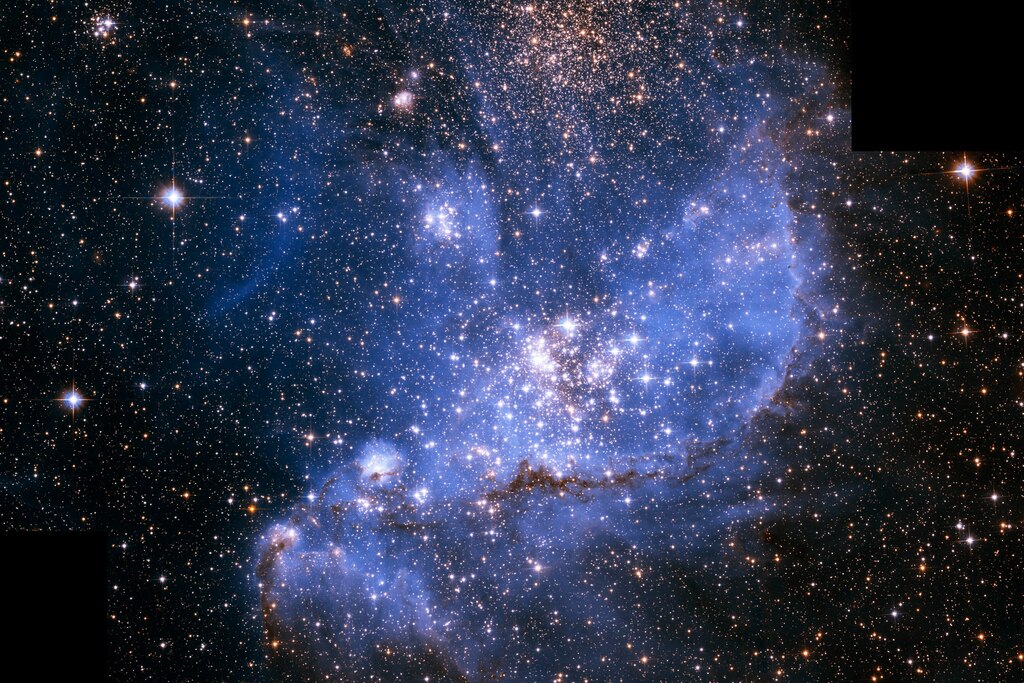Researchers using the James Webb Space Telescope were able to capture an “ethereal” view of a region inside a nearby dwarf galaxy where stars are forming.
The region of space, known as NGC 346, is within a dwarf galaxy called the Small Magellanic Cloud. The Small Magellanic Cloud is a satellite galaxy of our own Milky Way and is visible to the unaided eye in the southern constellation Tucana.
NGC 346 has been observed by the Hubble Space Telescope before, using visible light. But the James Webb Space Telescope, which is operated out of the Space Telescope Science Institute on the Johns Hopkins University campus, is equipped with more powerful sensors and cameras than Hubble, giving researchers new ways to view, understand and study objects in space.
The newly published image was captured using Webb’s Mid-Infrared Instrument, a powerful tool that gives researchers the ability to look into regions where stars are forming.
The Baltimore Banner thanks its sponsors. Become one.
The image shows blue regions that look like tendrils, which represent dusty silicates and other sooty chemicals. It also shows bright patches, researchers said, that mark areas with protostars, many of which are young stars still forming in cocoons of cosmic dust.
The Small Magellanic Cloud is less developed than the Milky Way Galaxy, according to Space Telescope Science Institute officials, and it contains fewer heavy elements. Heavy elements are forged in stars through nuclear fusion and supernova explosions, so a younger galaxy with still-forming stars would be expected to have fewer heavy elements.

Because of that, scientists expected the SMC to lack significant amounts of cosmic dust, which is formed from heavy elements like silicon and oxygen.
Astronomers are able to combine data from Webb’s near-infrared and mid-infrared sensors to take a more complete look at regions like NGC 346 and develop a deeper understanding of galaxies that existed billions of years ago.
Other recent discoveries from the JWST include the presence of a key ingredient for life on one of Jupiter’s moons and an image of the most distant star ever detected. Scientists working in Baltimore are responsible for operating the telescope and for processing its data into images.





Comments
Welcome to The Banner's subscriber-only commenting community. Please review our community guidelines.